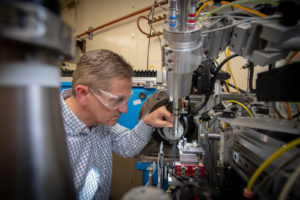On March 31, a small team of staff at Berkeley Lab’s Advanced Light Source (ALS), which produces beams of X-rays and other types of light to support a wide variety of experiments for researchers around the world, launched several COVID-19-related experiments for other scientists who controlled the work remotely. X-rays allow researchers to map out the 3D structure of proteins relevant to diseases at the scale of molecules and atoms. Structural studies can lead to drugs that target and attack the virus while leaving other vital systems intact, for example, or that can otherwise improve the body’s defenses against the virus.
Most staff and experiments at the ALS and Berkeley Lab have been sidelined because of shelter-in-place orders that are intended to limit the spread of the coronavirus, which has already infected about 2 million people worldwide. The specially approved ALS experiments – which were authorized by Berkeley Lab leadership – have so far been carried out by individual scientists working at separate experimental sites, known as beamlines, in the ALS facility in order to maintain social distancing. Additionally, on-site workers are taking extra precautions for safety such as regularly sanitizing equipment.
None of the work involves any live samples of the SARS-CoV-2 virus that causes COVID-19. The samples include crystallized viral proteins that cannot cause infection. Additional samples to be analyzed include host-cell proteins required for infection by the virus.

“There are proteins that are making up the virus structure and a large number of other, non-structural proteins that help in the infection cycle of the virus,” said Marc Allaire, a beamline scientist at the ALS who supports several beamlines operated by the Berkeley Center for Structural Biology. The center receives support from participating members for this work, including from a large group of pharmaceutical companies across the U.S. and internationally.
The center is a part of the Biosciences Area’s Molecular Biophysics and Integrated Bioimaging (MBIB) Division, which is connected to all of the beamlines and staff participating in the initial batch of approved COVID-19-related experiments.
MBIB Director Paul Adams said, “It is a testament to the importance of the ALS for this kind of biomedical research that so many groups have requested access to help in their efforts to address COVID-19. The beamlines being used for the crystallography work developed a ‘rapid response’ capability several years ago, with remote access and automated data collection and analysis, and so were ready to hit the ground running when this crisis occurred.”
Read more in the Berkeley Lab News Center.



